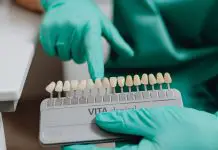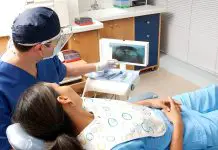Neurosurgery has enjoyed constant developments over the years. Neurosurgeons and researchers continually discover new ways to help their patients live pain-free and fulfilling lives.
With advances in surgical techniques, patients who would otherwise live with crippling disorders are able to become productive members of society. Dr. Navraj Heran, a neurosurgeon at False Creek Healthcare Center in Vancouver BC, details some of the exciting advancements in the field.

Minimally Invasive Techniques
Over the past several years, the practice of neurosurgery has shifted from large, open incisions to keyhole procedures. Craniosynostosis, arachnoid cysts, and hydrocephalus can be treated using minimally invasive surgery, among many other serious conditions. When doctors are able to concentrate their efforts upon one small area of the brain or nerves, the risk of infection and complications is much lower.
Fusion surgeries have also benefited from minimally invasive techniques. Spinal fusion surgery is a procedure that joins bones of the spine permanently. This surgery benefits people with degenerative disk disease, spinal stenosis, fractured vertebrae, herniated disks, and tumors, among other conditions. Spinal fusion can eliminate the pain associated with motion and to restore the spine’s stability. The Aurora Zip device allows this to be done without the standard screws and rods. This is one such device that allows for a “Screwless procedure”.
Motion Preservation and Dynamic Stabilization
Disc replacement surgery and Non-fusion stabilization of the spine, with the latter particularly being used in the lumbar spine and the former more commonly in the cervical spine, have allowed great advances in patient care. The Medtronic DIAM and Paradigm Coflex devices are being used more and more for management of mechanical back pain from discogenic or facet mediated mechanisms. The Spinal Kinetics M6C device, as a cervical disc replacement, allows for mimicking normal spinal motion, almost like the normal motions of discs.
Endovascular Neurosurgery
Catheter related approaches using radiologic guidance for brain aneurysms, AVMs, has become the standard. These techniques to prevent the need for an open craniotomy for treatment of these disorders, which is usually associated with higher risks and protracted recovery.
Microsurgery and Robotic Surgery
Microsurgery has become possible thanks to the advent of preoperative medical imaging and robotic equipment. Guided by MRI and 3-D images with navigation, neurosurgeons are able to see precisely where they are operating, giving them a better chance of accomplishing their tasks without damaging surrounding tissue.
The CyberKnife device was one of the first devices used for robotic neurosurgery. The CyberKnife operates using a robotic arm that holds a targeted radiation device. Patients treated by the CyberKnife could have been considered inoperable in the past. This technology has saved many lives.
Another facet of microsurgery which has received a great deal of attention is a microrobot that can travel through the blood vessels and deliver necessary medication to the brain. Getting medication to brain cells is often difficult due to the blood-brain barrier, but this device is able to produce targeted results. It can be guided by a magnet. It can deliver both medications and stem cells to affected areas of the brain.
Nanoparticle Research
One treatment being studied by neurosurgeons is the use of nanoparticles delivered intravenously. These nanoparticles help to reprogram the immune cells which frequently overreact to the injury. This procedure has the potential to support tissue healing and reduce inflammation in the spine.
This procedure is currently being used in animal trials, but the study doctors hope that it will be approved for humans in the near future.
Deep Brain Stimulation Implants
Deep brain stimulation implants are meant to help patients who are suffering from dystonia, Parkinson’s, and even depression or OCD.
Deep brain stimulation devices are comprised of electrodes that are applied to various parts of the brain, targeting the areas of the brain which contribute to the unwanted movement. This treatment has been used in adults, but pioneering advances in children’s neurosurgery are being made.
Neurosurgery Advances Rapidly
In a field that is receptive to continuous development, there are many new areas for neurosurgeons to explore. Patients with conditions that severely impact their quality of life are able to receive treatment, and conditions that could not be treated in the past are now given a chance to recover. Dr. Navraj Heran encourages patients and clinicians to keep up with the newest and best advances in this rapidly developing field.









































